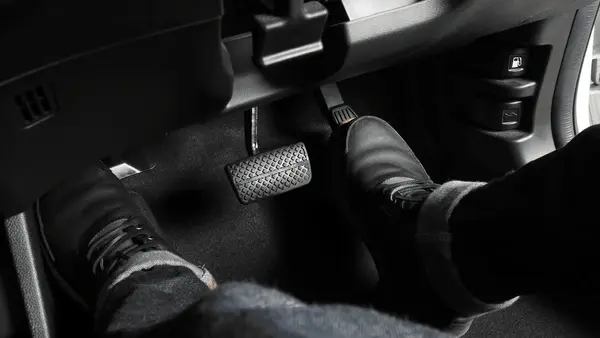A stuck gas pedal is a frightening and potentially dangerous scenario for drivers. Gas pedals, or accelerators, are critical components that control the speed of a vehicle.
It can cause rapid acceleration and even loss of control if it is stuck in its engaged position.
This article will examine the possible causes of a stuck gas pedal. We’ll also discuss the steps to be taken immediately when faced with the problem, as well as strategies for preventing or addressing it in the future.
Causes of a Sticking Gas Pedal
It is important to understand the possible causes of a stuck gas pedal to effectively troubleshoot. Mechanical issues, such as a broken cable or throttle linkage, and electronic issues with your vehicle’s throttle control system are common causes.
Recognizing the Signs of a Sticking Gas Pedal
It’s crucial to identify the symptoms of a stuck gas pedal before deciding what to do. The gas pedal may feel unusually stiff, it might not return to its original position when pressed or your vehicle could accelerate without any additional driver input.
Immediate Response to a Sticking Gas Pedal
Quick thinking and decisive action are essential to avoid accidents when faced with a stuck gas pedal. This will ensure the safety of the driver as well as other road users. What to do when a malfunctioning gas pedal occurs is outlined in the following steps.
Stay Calm and Focus
First and foremost, you must remain calm. Anxiety can worsen the situation and cause poor decisions. Take deliberate action to resolve the problem. Focus on keeping control of your vehicle.
Shift to Neutral
Then, immediately shift your vehicle to neutral. The engine is disengaged from the wheels and the driver can regain control of the speed. It is important to remember that shifting into neutral will not shut off the vehicle’s engine. Instead, it will prevent further acceleration.
Steer to Safety
While in neutral, drive the vehicle to a location that is safe and away from the traffic. You should look for an area or shoulder where you can stop completely without risking yourself or other drivers.
Apply Brakes Gradually
Apply the brakes slowly after shifting into neutral and steering towards safety. Do not slam the brakes, as it can cause skidding and loss of control. It is important to apply steady pressure and control the brakes. This will help you stop your vehicle safely.
Turn Off the Engine
The last option is to turn off the motor if the steps above do not work. The vehicle should be safely parked and at a safe distance. Turning off the engine disables power brakes and steering. After the engine has been turned off, try restarting the vehicle and see if it still occurs.
Call for Assistance
Call roadside assistance or an emergency service if the problem cannot be resolved on your own or you’re unsure about driving. A professional can diagnose the problem, and make sure that your vehicle is safe.
Preventive Measures and Regular Maintenance
Prevention of a stuck gas pedal begins with proactive maintenance. Preventive measures are important to minimize the chance of gas pedal failure.

Regular Vehicle Inspections
Regularly inspect your car, and make sure to check the cables and linkage. Check for signs of damage or wear and correct any issues immediately to avoid potential sticking.
Lubrication of Moving Parts
Make sure that all moving parts of the throttle are lubricated. A lack of lubrication may cause friction and the pedal to become stuck. According to manufacturer recommendations, lubricate regularly the cables and throttle linkage.
Inspection of Electronic Throttle Control System
Periodic inspections are essential for vehicles with electronic throttle controls. Early detection can help prevent serious problems in the future.
Prompt Repairs and Replacements
You should address any issues with your gas pedal as soon as you become aware of them. Repairs or part replacements that are delayed can lead to a malfunction.
Professional Checkups
You should consider having your vehicle inspected by a professional, particularly if you’re unsure about the state of the throttle. A mechanic can carry out comprehensive inspections and detect potential problems that are not visible during routine checks.
Conclusion
A stuck gas pedal can be a frightening experience. However, taking swift action and remaining calm will help to minimize the risks. Drivers can avoid a dangerous situation by recognizing the signs, remaining calm, and taking immediate action. Preventive maintenance and preventative measures are also important to reduce the risk of gas pedal failure. Safety should be the number-one priority. Addressing any problems promptly will make driving safer for all.
